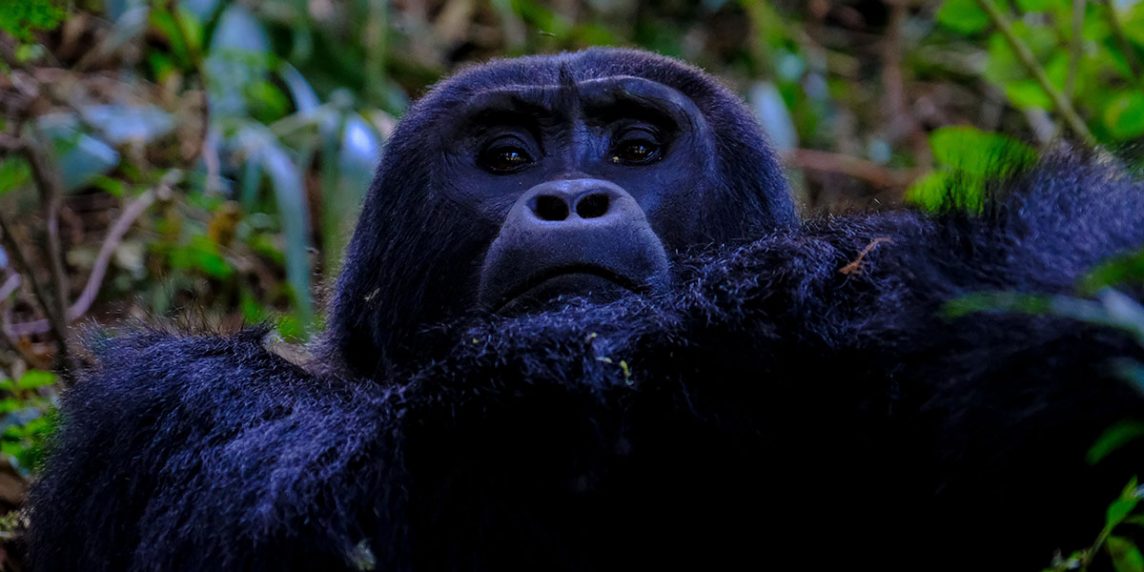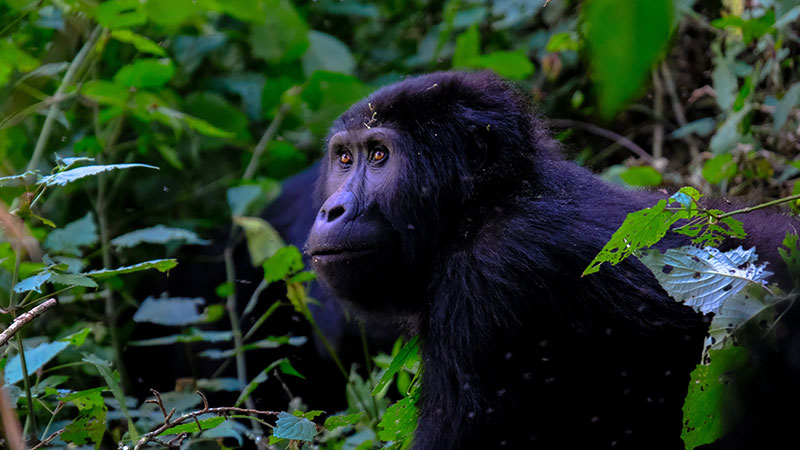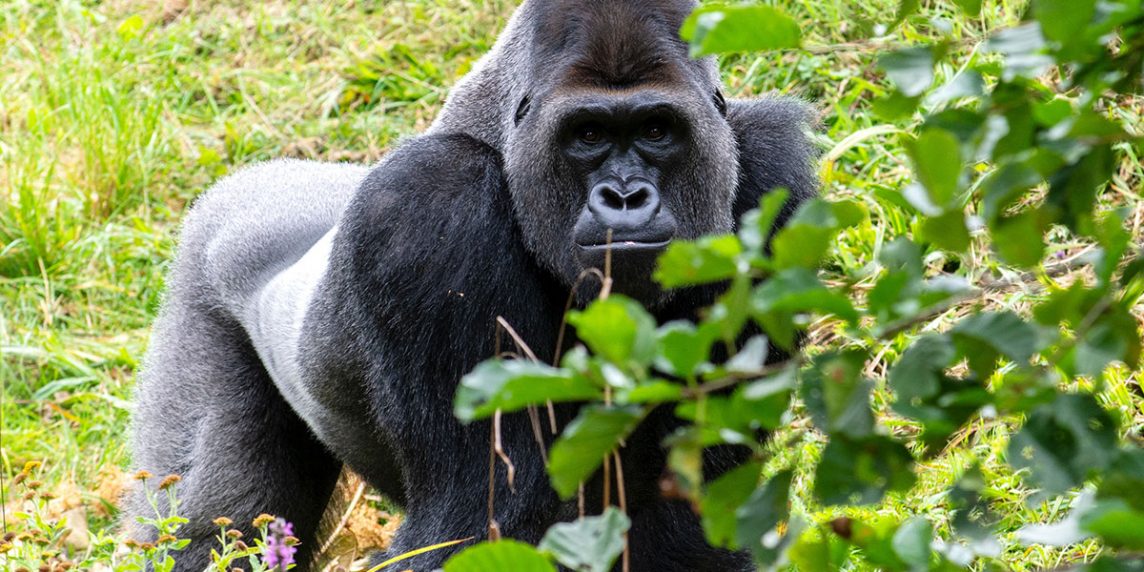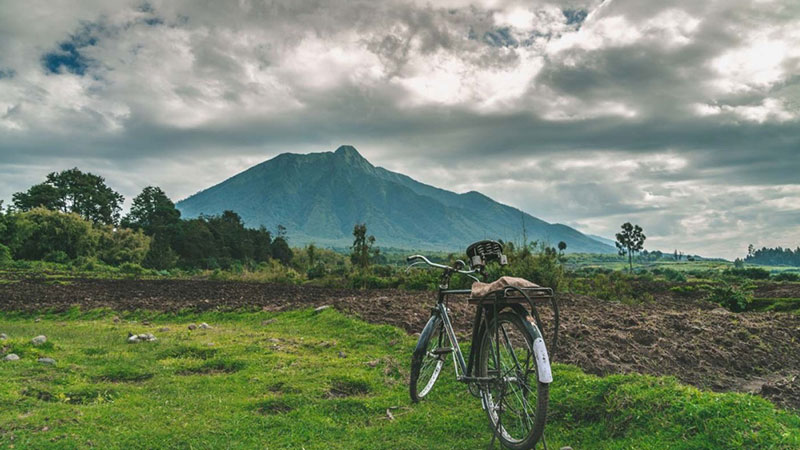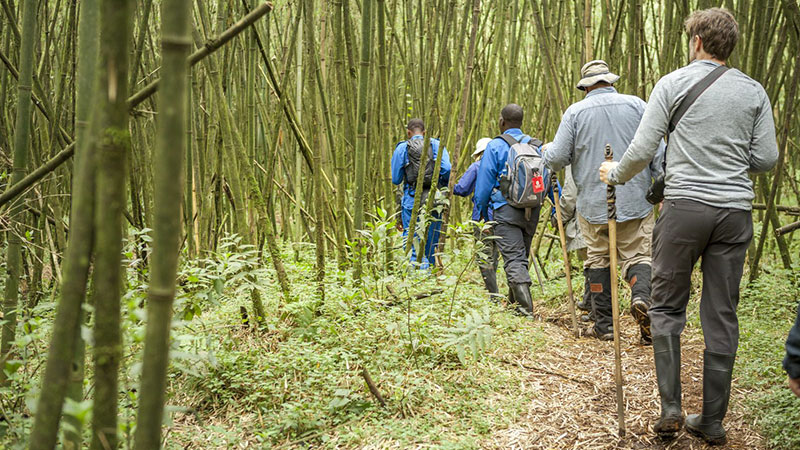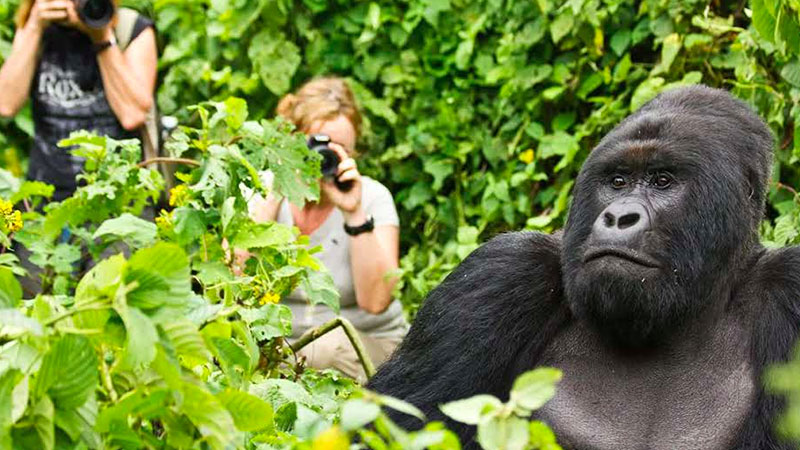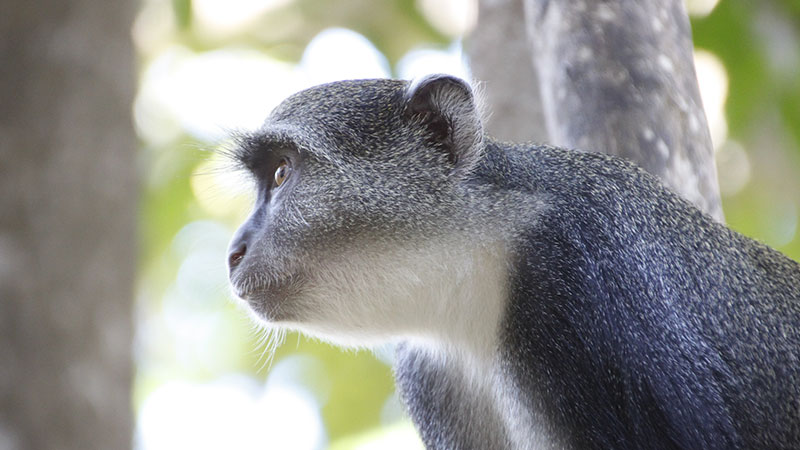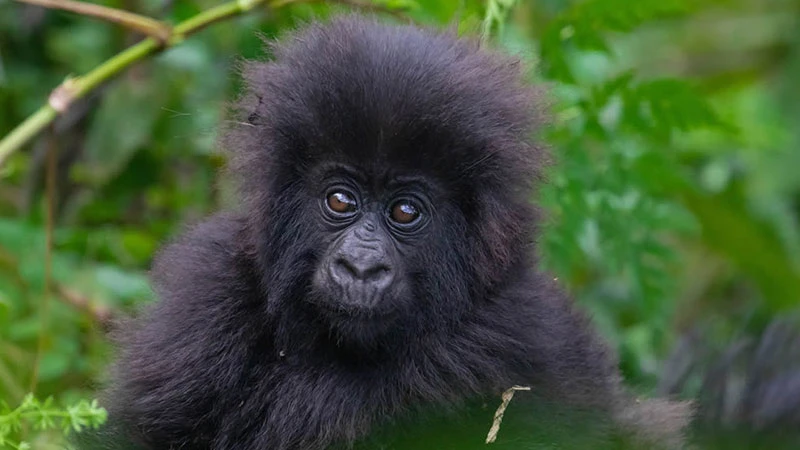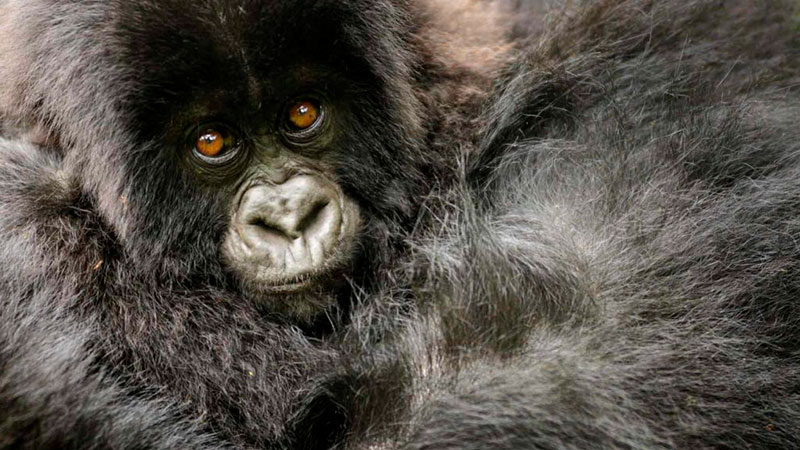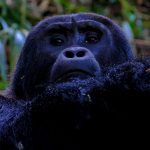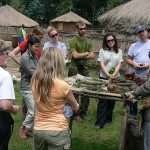18 facts about Mountain Gorilla in Volcanoes The mountain gorilla, scientifically known as Gorilla beringei beringei, stands as an iconic symbol of Rwanda’s rich biodiversity. These majestic primates inhabit the dense forests of the Virunga Mountains, straddling the borders of Rwanda, Uganda, and the Democratic Republic of the Congo. The mountain gorilla, distinguished by its robust physique and distinctive silverback males, is a critically endangered species, making conservation efforts imperative for its survival.
Physical Characteristics: The mountain gorilla in Rwanda is characterized by its large, powerful build, covered in dense, coarse fur that provides insulation against the cool temperatures of its mountainous habitat.
Conservation Status: The mountain gorilla is classified as critically endangered by the International Union for Conservation of Nature (IUCN). Conservation efforts are crucial to protect their habitats and ensure the survival of this species.
Habitat: Mountain gorillas inhabit the mountainous regions of central Africa, including the Virunga Mountains, which span Rwanda, Uganda, and the Democratic Republic of the Congo.
Rwandan Conservation Initiatives: Rwanda has been a pioneer in gorilla conservation, establishing national parks such as Volcanoes National Park to safeguard the gorilla habitat. Strict regulations govern tourism to minimize the impact on the gorillas.
Social Structure: Mountain gorillas live in cohesive family units, forming strong bonds through social interactions such as grooming, playing, and mutual protection. These family groups typically consist of several females and their offspring. They live in groups called troops or families, led by a dominant silverback male.
Silverbacks: Adult males, or silverbacks, get their name from the silver hair that develops on their back as they mature. They play a crucial role in protecting and leading the group.
Communication: Gorillas communicate through various vocalizations, body language, and facial expressions, fostering strong social bonds within their groups.
Diet: Despite their imposing size, mountain gorillas are primarily herbivores. Their diet includes leaves, stems, bamboo shoots, and other vegetation found in their forest habitat. Only a small portion of their diet is made up of insects.
Opposable Thumbs: Mountain gorillas possess opposable thumbs, allowing them to grasp and manipulate objects with remarkable dexterity. This adaptation is particularly useful for gathering and consuming food.
Conservation Success: Conservation efforts in Rwanda have led to an increase in the mountain gorilla population, showcasing the positive impact of targeted conservation initiatives.
Threats: Despite conservation successes, mountain gorillas face ongoing threats, including habitat loss due to agriculture and human settlement, poaching, and diseases transmitted by humans.
Ecotourism: Responsible ecotourism has become a significant component of mountain gorilla conservation. Visitors have the opportunity to observe these primates in their natural habitat, generating revenue that supports ongoing conservation efforts.
Gorilla Trekking: Gorilla trekking is a popular activity in Rwanda, allowing tourists to experience the thrill of encountering mountain gorillas in the wild. Permits are required, and a limited number of visitors are allowed each day to minimize disturbance to the gorillas.
Dian Fossey: The famous primatologist Dian Fossey conducted groundbreaking research on mountain gorillas in the Virunga Mountains, contributing significantly to our understanding of these creatures. Fossey’s legacy lives on through the Dian Fossey Gorilla Fund, which continues to work towards gorilla conservation and community development in the region.
Disease Risk: Mountain gorillas are susceptible to diseases carried by humans. Strict protocols, such as maintaining a safe distance and wearing masks, are implemented during gorilla trekking to minimize the risk of disease transmission.
Poaching Concerns: Despite conservation efforts, poaching remains a concern, as some individuals may target gorillas for body parts or capture infants for the illegal pet trade.
Community Involvement: Involving local communities in conservation efforts is crucial for the success of protecting mountain gorillas and promoting sustainable practices and coexistence.
Research Opportunities: Studying mountain gorillas provides insights into primate behavior, ecology, and conservation, benefiting not only the species but also our broader understanding of biodiversity.
In conclusion, these 18 facts about Mountain Gorilla offer a glimpse into the fascinating world of mountain gorillas in Rwanda, showcasing the delicate balance between conservation, tourism, and the ongoing challenges faced by these incredible creatures.
